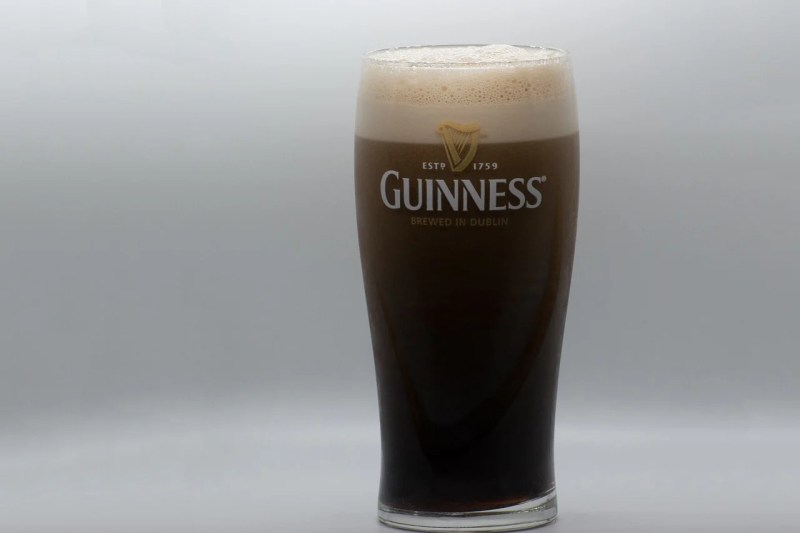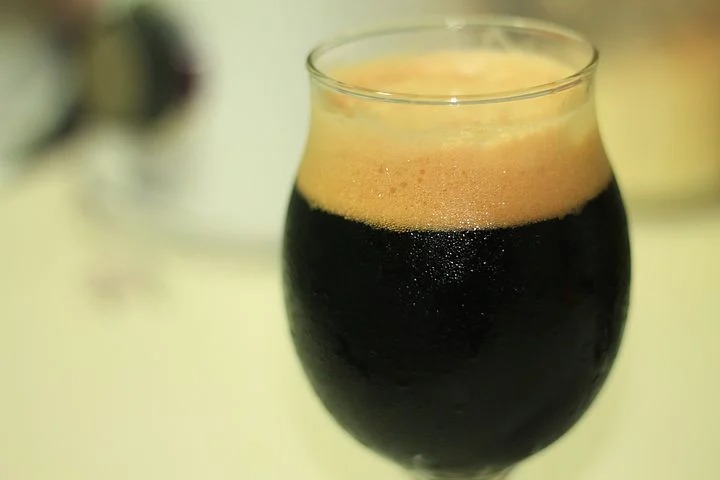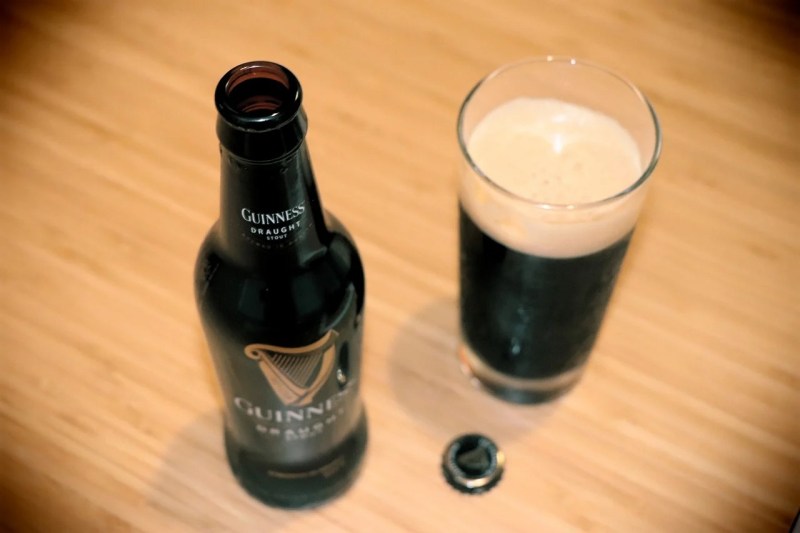You don’t have to be a beer connoisseur to know that there are quite a few types of beers. One lap around the aisles of any liquor store or a quick gander at the draft menu at your local pub will introduce a variety of terms — ale, pale ale, Pilsner, lager, porter — to name a few. But, what about stout beer — the illustrious, dark, silky-looking beer? What does stout beer taste like? What exactly is stout beer? What is the difference between stout beer and other types of beer? Is Guinness the only stout beer? What is the alcohol content of stout beer? Does stout beer contain a lot of carbs and calories? Keep reading for the answers to these questions and more as we delve into all the basics of this deeply dark — almost black — ale, and you may just find yourself changing up your usual order for a darker brew.
What Kind of Beer Is Stout Beer?
If your beer knowledge is limited to just the basics, a little primer may help before we dive into the details of stout beer. There are two general categories of beer — ales and lagers — with the differentiation lying within the type and behavior of the yeast and the aging time and temperature. Ales rely on Saccharomyces cerevisiae, a yeast that gathers at the top of the tank during the fermentation process, which results in an aromatic beer with fruity notes. Ales age in 40–55°F environments for just a few weeks. In contrast, lagers are typically aged in a much cooler space (about 32–45°F) and for several months. Moreover, the yeast used in lagers, Saccharomyces pastorianus, gathers at the bottom of the tank during fermentation. The result is a crisp, clean-tasting beer like Budweiser, Corona, Coors Light, Yuengling, and Michelob Ultra.
Within these two broad categories, there are many subtypes of ales and lagers. Stout beer is a type of ale thought to be a descendent of a porter.
Origins of Stout Beer

Spanning back all the way to the late 1600s, the term “stout” was initially used in conjunction with porter (“stout porters”) to describe the strongest porters. Porter beers, which are similar to stout in their dark color and malty flavor and aroma, were being made with different alcohol percentages during this time, so those that reached about 7-8% alcohol by volume were called stout porters. That said, it wasn’t until centuries later that stout beer became its own entity and term distinct from its parent porters.
Today, Guinness stouts are among the most common and well-known stout beers. Notoriously dark, creamy, and foamy due to the nitrogen added to the draught beers or to the bottle itself, Guinness stouts are made from water, malted and roasted barley, hops, and yeast. The barley, which is the cereal grain used, is first malted and then roasted, which is what imparts the iconic dark color and deep malty, coffee flavor.
What Does Stout Beer Taste Like?

Though united by a similar deep brown or nearly black color, there is a huge variety of stouts these days, with quite a range in flavors and aromas. Because stouts are somewhat related to porters, they do share similar darkness and some of the same flavor notes as their ancestor, but porters tend to be lighter in color and are made with roast malted barley while stouts are made from black patent malt. As such, stout beers are darker and have a sweet, full-bodied, slightly roasted flavor profile with heavier notes of coffee than porters, which are more reminiscent of chocolate.
That said, there are chocolate stouts with distinctive dark chocolate notes, achieved either through an extensive kiln roasting process, which imparts a bitter chocolate flavor and aroma to the malt or by actually adding dark chocolate to the fermented product. In addition to chocolate stouts, there are quite a few other types of stout beer, such as milk stouts, oatmeal stouts, oyster stouts, and imperial stouts, all with unique flavor profiles, from lighter malty notes to heavy, boozy, deep tones.
How Many Carbs and Calories Are In Stout Beer?

Due to the deep, nearly black color of stout beer and its genesis of describing a particularly strong beer, many people assume stout beers are really heavy in terms of flavor, alcoholic content, carbs, and calories, but this isn’t necessarily the case. The calories in any beer come from carbs and alcohol. There is no protein or fat. Carbohydrates contribute four calories per gram while alcohol contains seven calories per gram. This is why, unlike diet soda, beer will always contain some calories, unless you’re opting for a non-alcoholic beverage.
Calories In Stout Beer
Stout beer may look like it definitely contains lots of calories due to its rich color, frothy head, and notes of chocolate and malt, and while there are some stout beers with a lot of carbs, many stout beers are surprisingly low-calorie due to the lighter alcohol content. For this reason, the calories in many Guinness stouts are roughly equivalent to many lighter lagers. For example, Guinness Original Stout and Guinness Draught Stout only contain 4.2% ABV, and they both have only 125 calories and about 10 grams of carbohydrates. About 78 calories are from the alcohol content. These stout beers actually have fewer calories than a Budweiser, which has 145 calories in 12 ounces.
On the other hand, some stout beers are very high in calories since the number of calories in stout beers is largely dependent on the alcohol content, which can swing from a mere 4% alcohol by volume (ABV) upwards of 30% ABV and beyond. For example, an imperial stout known as Tactical Nuclear Penguin from Scotland’s BrewDog Brewery contains a whopping 32% ABV. Since alcohol contains seven calories per gram, boozy stouts can be high in calories. This particular stout is estimated to clock in at a hefty 960 calories. Imperial stouts, in general, tend to be higher in calories because they contain at least 7.5% ABV.
Carbs In Stout Beer
Just as strong stouts with a high ABV content are high in calories, so too are stouts with more carbs. For example, milk stouts are fermented with lactose, a milk sugar, which makes the stout silky smooth but higher in carbs. Left Hand Brewing Company’s Milk Stout Beer has 18 grams of carbs compared to the 10 grams of carbs in the standard Guinness. New Holland Dragon’s Milk Bourbon Barrel Stout has about 325 calories per 12-ounces due to the 11% ABV and high carbohydrates. Oatmeal stouts can also be higher in carbs since oats are added to the recipe.




